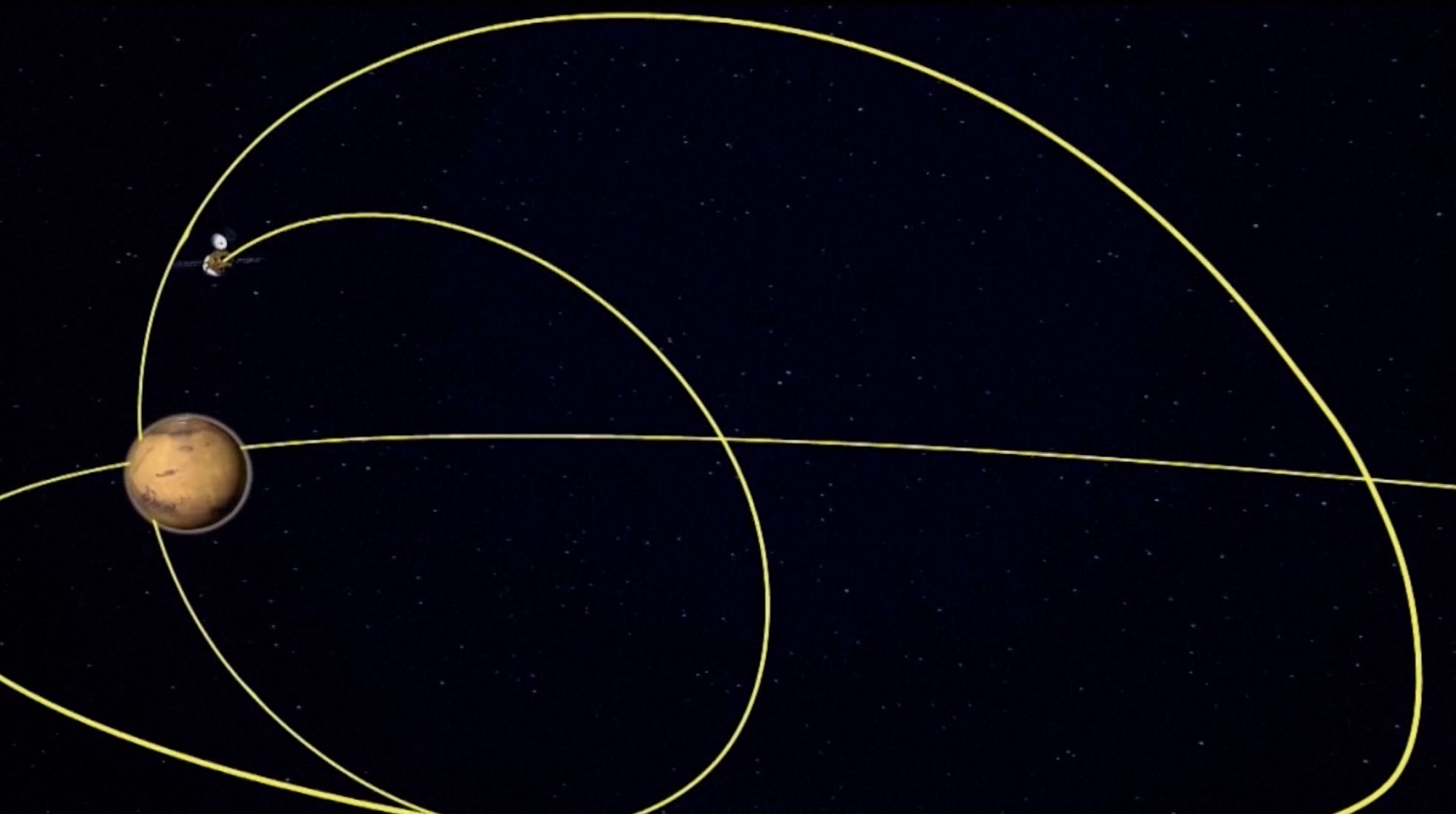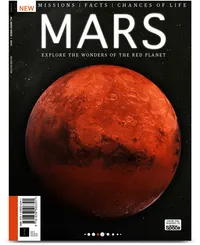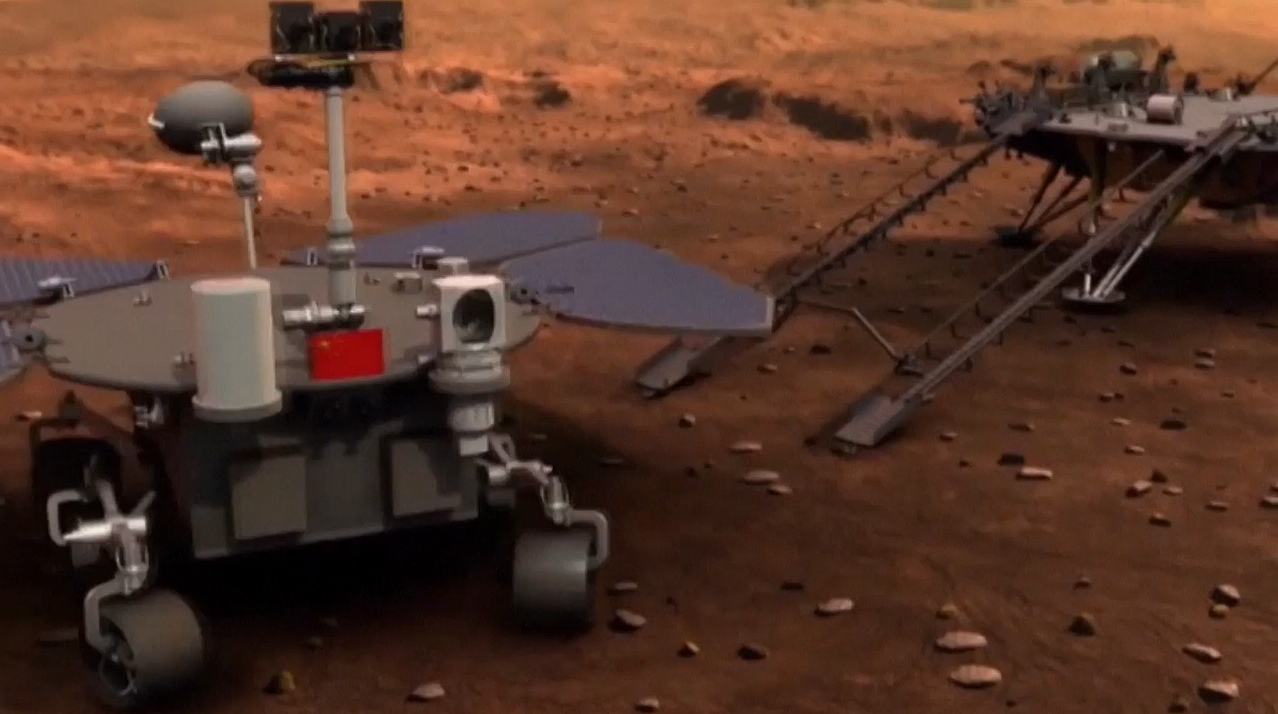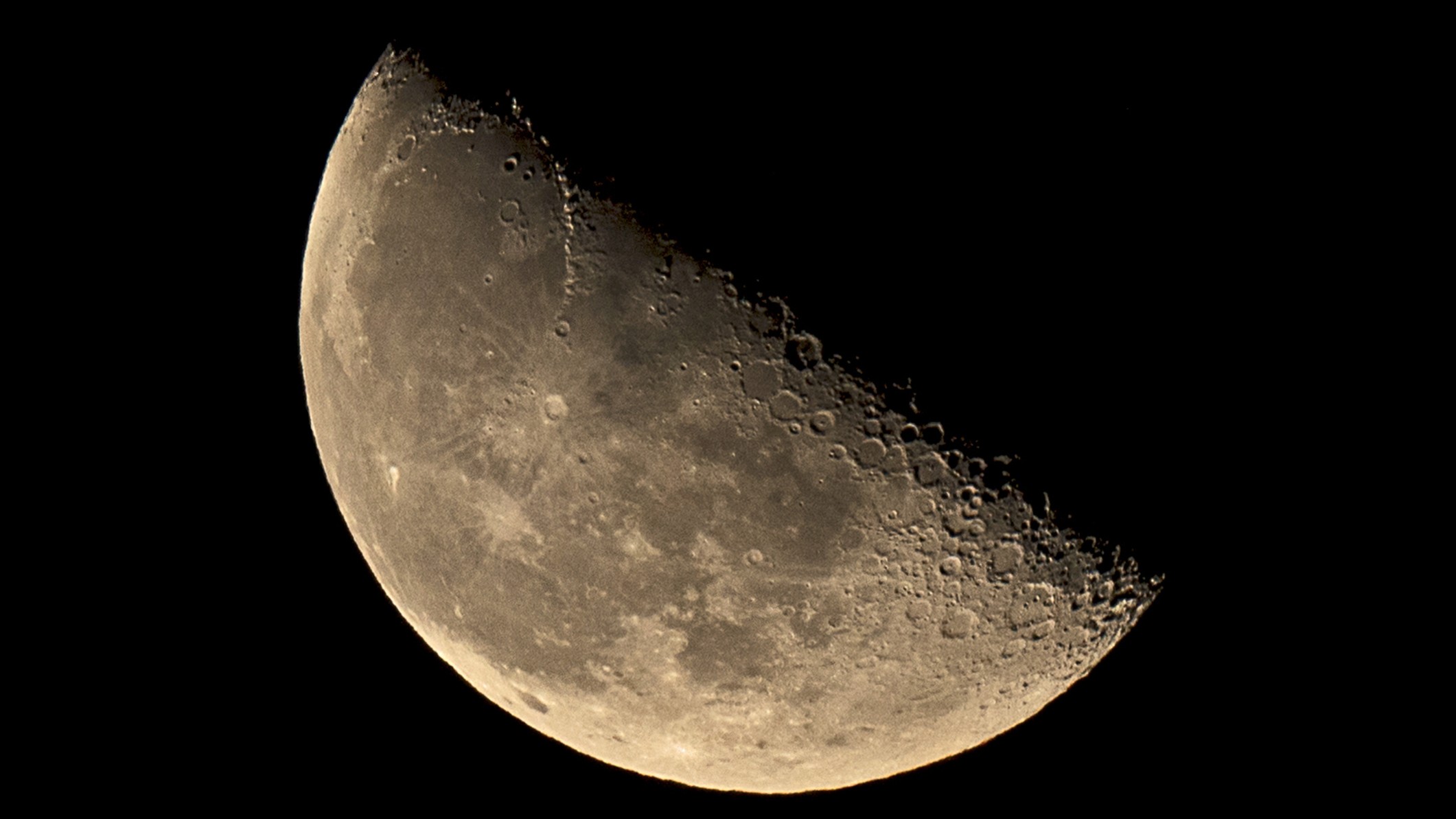Scientists' predictions for the long-term future of the Voyager Golden Records will blow your mind
Buckle up, everyone, and let's take a ride on a universe-size time machine.
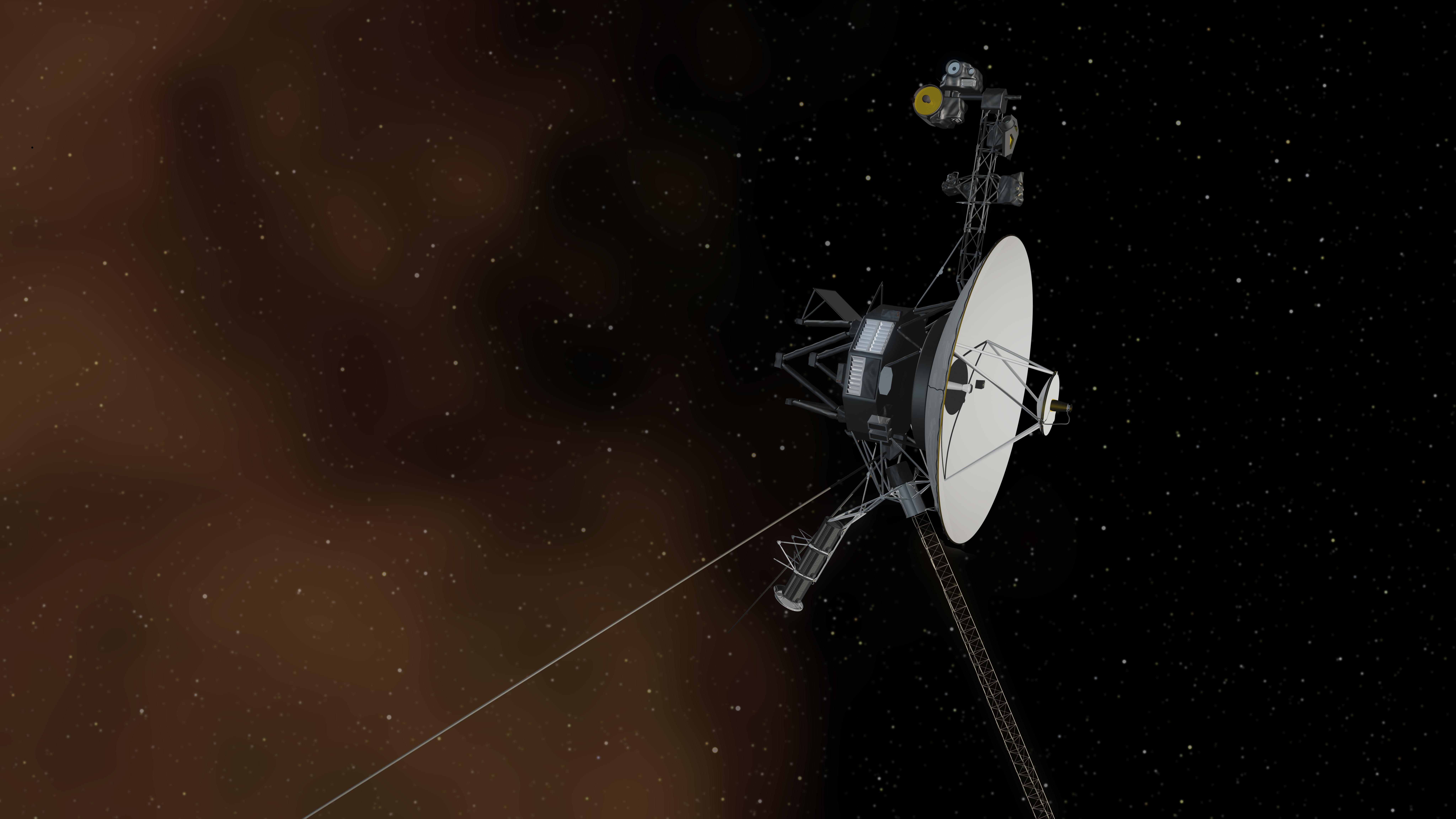
The future is a slippery thing, but sometimes physics can help. And while human destiny will remain ever unknown, the fate of two of our artifacts can be calculated in staggering detail.
Those artifacts are the engraved "Golden Records" strapped to NASA's twin Voyager spacecraft, which have passed into interstellar space. Although the spacecraft will likely fall silent in a few years, the records will remain. Nick Oberg, a doctoral candidate at the Kapteyn Astronomical Institute in the Netherlands, and a colleague wanted to calculate which (if any) stars the two Voyager spacecraft may encounter in the long future of our galaxy.
But the models let them forecast much, much farther into the future. Oberg presented their work at the 237th meeting of the American Astronomical Society, held virtually due to the coronavirus pandemic, on Jan. 12, where he spun a tale of the long future of the twin Voyagers and their Golden Records.
Related: Pale Blue Dot at 30: Voyager 1's iconic photo of Earth from space reveals our place in the universe
NASA launched Voyager 1 and Voyager 2 in 1977 to trek across the solar system. On each was a 12-inch (30 centimeters) large gold-plated copper disk. The brainchild of famed astronomer Carl Sagan, the Golden Records were engraved with music and photographs meant to represent Earth and its humans to any intelligent beings the spacecraft meet on their long journeys. Both spacecraft visited Jupiter and Saturn, then the twins parted ways: Voyager 1 studied Saturn's moon Titan while Voyager 2 swung past Uranus and Neptune.
In 2012, Voyager 1 passed through the heliopause that marks the edge of the sun's solar wind and entered interstellar space; in 2018, Voyager 2 did so as well. Now, the two spacecraft are chugging through the vast outer reaches of the solar system. They continue to send signals back to Earth, updating humans about their adventures far beyond the planets, although those bulletins may cease in a few years, as the spacecraft are both running low on power.
But their journeys are far from over.
Breaking space news, the latest updates on rocket launches, skywatching events and more!
Oberg and his colleague combined tracking the Voyagers' trajectories forward with studying the environments the spacecraft will fly through to estimate the odds of the Golden Records surviving their adventures while remaining legible. The result is a forecast that stretches beyond not just humanity's likely extinction, but also beyond the collision of the Milky Way with the neighboring Andromeda galaxy — beyond even the extinction of most stars.
Related: The Golden Record in pictures: Voyager probes' message to space explained
Milky Way sightseein
Unsurprisingly, the duo's research ambitions didn't start out quite so vast. The new research was inspired by the release of the second batch of data from the European Space Agency's spacecraft Gaia, which specializes in mapping more than a billion stars super precisely.
"Our original goal was to determine with a very high precision which stars the Voyagers might one day closely encounter using the at the time newly released Gaia catalog of stars," Oberg said during his presentation. So he and his co-author began by tracing the Voyagers' journeys to date and projecting their trajectories out into the future.
But don't get excited for any upcoming milestones. Not until about 20,000 years from now will the Voyagers pass through the Oort cloud — the shell of comets and icy rubble that orbits the sun at a distance of up to 100,000 astronomical units, or 100,000 times the average Earth-sun distance — finally waving goodbye to its solar system of origin.
"At that point for the first time the craft will begin to feel the gravitational pull of other stars more strongly than that of our own sun," Oberg said.
It's another 10,000 years before the spacecraft actually come near an alien star, specifically a red dwarf star called Ross 248. That flyby will occur about 30,000 years from now, Oberg said, although it might be a stretch to say that the spacecraft will pass by that star. "It's actually more like Ross 248 shooting past the nearly stationary Voyagers," he said.
By 500 million years from now, the solar system and the Voyagers alike will complete a full orbit through the Milky Way. There's no way to predict what will have happened on Earth's surface by then, but it's a timespan on the scale of the formation and destruction of Pangaea and other supercontinents, Oberg said.
Throughout this galactic orbit, the Voyager spacecraft will oscillate up and down, with Voyager 1 doing so more dramatically than its twin. According to these models, Voyager 1 will travel so far above the main disk of the galaxy that it will see stars at just half the density as we do.
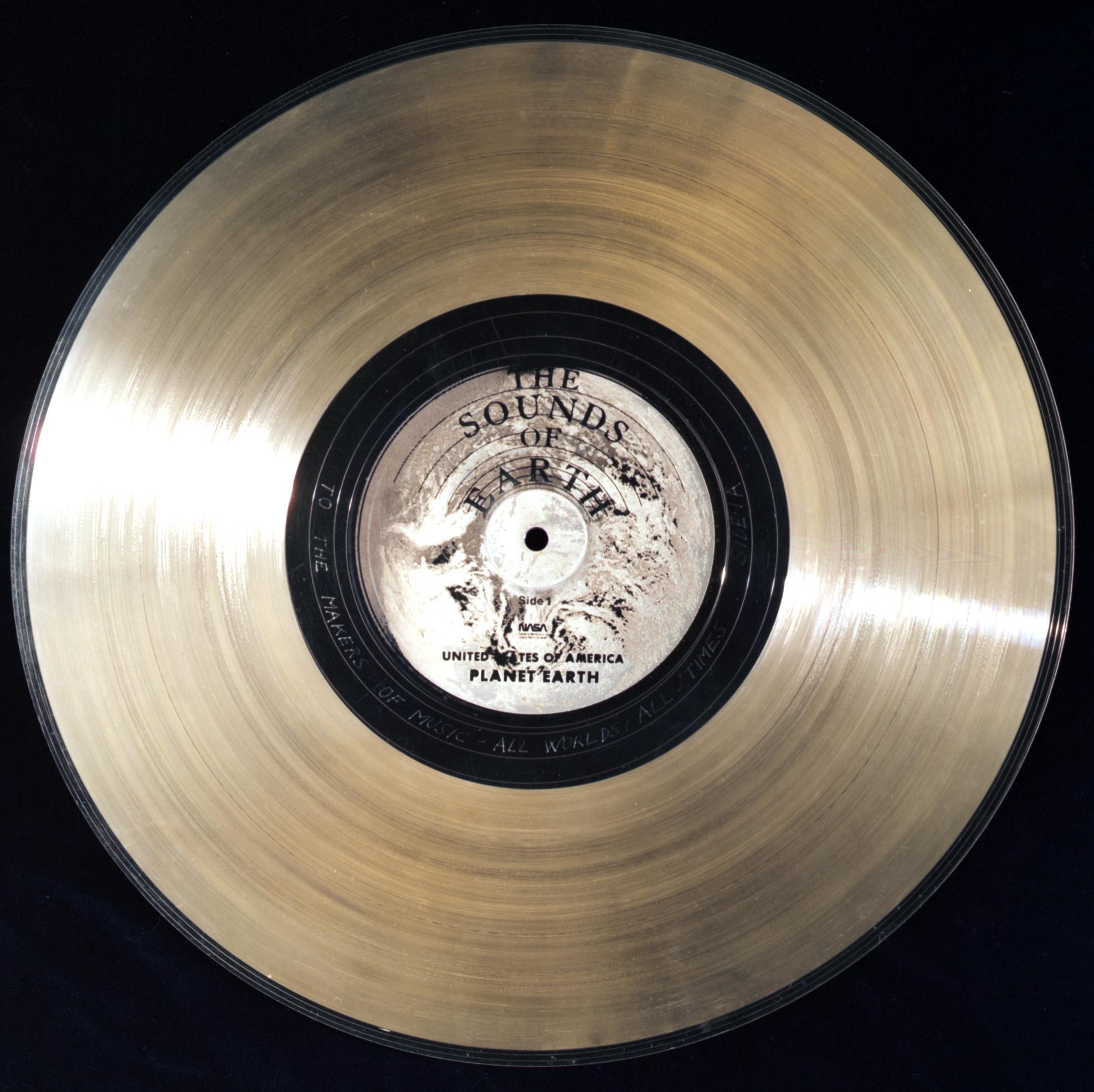
Odds of destruction
The same difference in vertical motion will also shape the differing odds each spacecraft's Golden Record has of survival.
The records were designed to last, meant to survive perhaps a billion years in space: beneath the golden sheen is a protective aluminum casing and, below that, the engraved copper disks themselves. But to truly understand how long these objects may survive, you have to know what conditions they'll experience, and that means knowing where they will be.
Specifically, Oberg and his colleague needed to know how much time the spacecraft would spend swathed in the Milky Way's vast clouds of interstellar dust, which he called "one of the few phenomena that could actually act to damage the spacecraft."
It's a grim scenario, dust pounding into the Voyagers at a speed of a few miles or kilometers per second. "The grains will act as a steady rain that slowly chips away at the skin of the spacecraft," Oberg said. "A dust grain only one-thousandth of a millimeter across will still leave a small vaporized crater when it impacts."
Voyager 1's vertical oscillations mean that spacecraft will spend more time above and below the plane of the galaxy, where the clouds are thickest. Oberg and his colleague simulated thousands of times over the paths of the two spacecraft and their encounters with the dust clouds, modeling the damage the Golden Records would incur along the way.
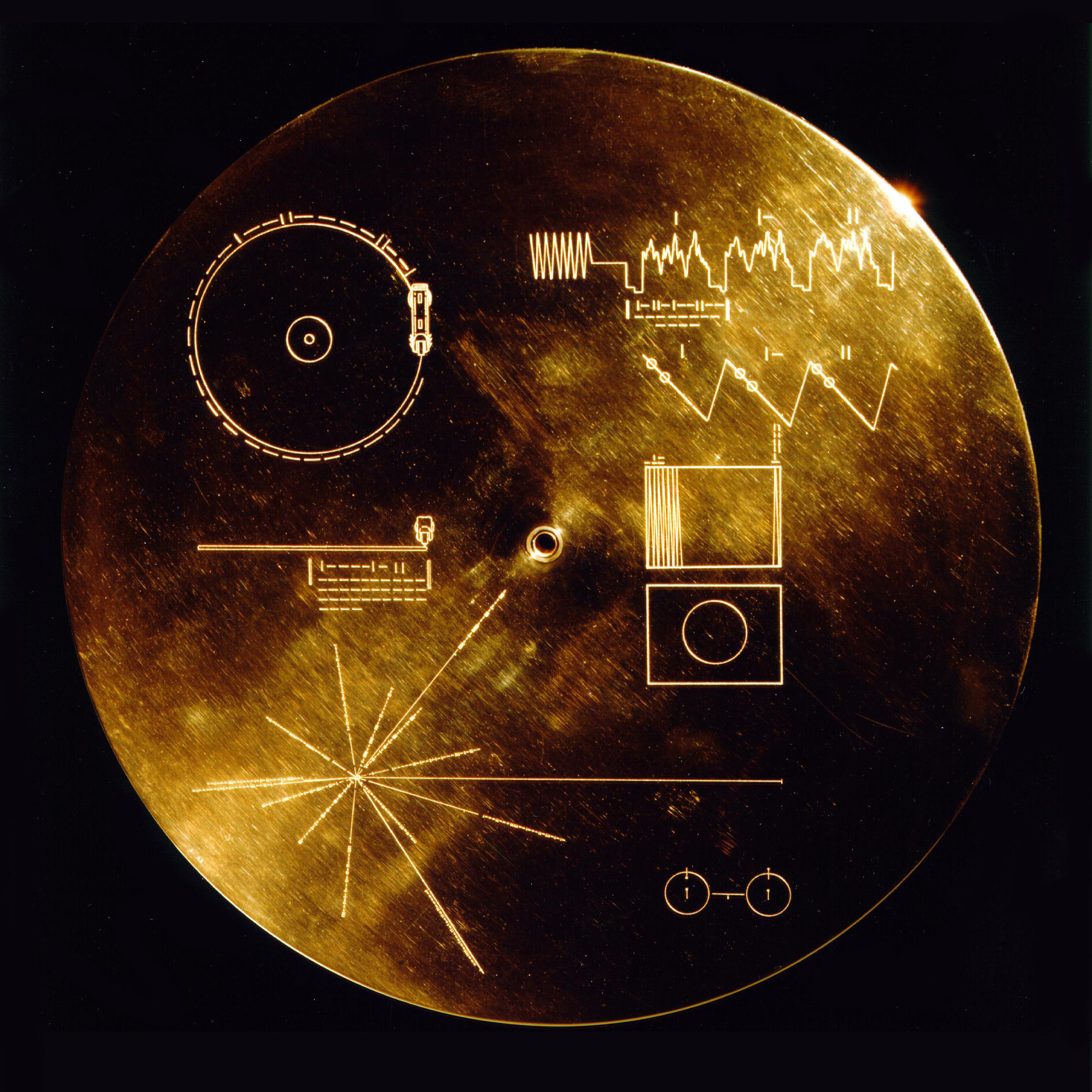
That work also requires taking into consideration the possibility that a cloud's gravity might tug at one of the Voyagers' trajectories, Oberg said. "The clouds have so much mass concentrated in one place that they actually may act to bend the trajectory of the spacecraft and fling them into new orbits — sometimes much farther out, sometimes even deeper toward the galactic core."
Both Golden Records have good odds of remaining legible, since their engraved sides are tucked away against the spacecraft bodies. The outer surface of Voyager 1's record is more likely to erode away, but the information on Voyager 2's record is more likely to become illegible, Oberg said.
"The main reason for this is because the orbit that Voyager 2 is flung into is more chaotic, and it's significantly more difficult to predict with any certainty of exactly what sort of environment it's going to be flying through," he said.
But despite the onslaught and potential detours, "Both Golden Records are highly likely to survive at least partially intact for a span of over 5 billion years," Oberg said.
Related: Photos from NASA's Voyager 1 and 2 probes

After the Milky Way's end
After those 5 billion years, modeling is tricky. That's when the Milky Way is due to collide with its massive neighbor, the Andromeda galaxy, and things get messy. "The orderly spiral shape will be severely warped, and possibly destroyed entirely," Oberg said. The Voyagers will be caught up in the merger, with the details difficult to predict so far in advance.
Meanwhile, the vicarious sightseeing continues. Oberg and his colleague calculated that in this 5-billion-year model-friendly period, each of the Voyagers likely visits a star besides our sun within about 150 times the distance between Earth and the sun, or three times the distance between the sun and Pluto at the dwarf planet's most distant point.
Precisely which star that might be, however, is tricky — it may not even be a star we know today.
"While neither Voyager is likely to get particularly close to any star before the galaxies collide, the craft are likely to at least pass through the outskirts of some [star] system," Oberg said. "The very strange part is that that actually might be a system that does not yet exist, of a star that has yet to be born."
Such are the perils of working on a scale of billions of years.
From here, the Voyagers' fate depends on the conditions of the galactic merger, Oberg said.
The collision itself might kick a spacecraft out of the newly monstrous galaxy — a one in five chance, he said — although it would remain stuck in the neighborhood. If that occurs, the biggest threat to the Golden Records would become collisions with high-energy cosmic rays and the odd molecule of hot gas, Oberg said; these impacts would be rarer than the dust that characterized their damage inside the Milky Way.
Inside the combined galaxy, the Voyagers' fate would depend on how much dust is left behind by the merger; Oberg said that may well be minimal as star formation and explosion both slow, reducing the amount of dust flung into the galaxy.
Depending on their luck with this dust, the Voyagers may be able to ride out trillions of trillions of trillions of years, long enough to cruise through a truly alien cosmos, Oberg said.
"Such a distant time is far beyond the point where stars have exhausted their fuel and star formation has ceased in its entirety in the universe," he said. "The Voyagers will be drifting through what would be, to us, a completely unrecognizable galaxy, free of so-called main-sequence stars, populated almost exclusively by black holes and stellar remnants such as a white dwarfs and neutron stars."
It's a dark future, Oberg added. "The only source of significant illumination in this epoch will be supernovas that results from the once-in-a-trillion-year collision between these stellar remnants that still populate the galaxy," he said. "Our work, found on these records, thus may bear witness to these isolated flashes in the dark."
Email Meghan Bartels at mbartels@space.com or follow her on Twitter @meghanbartels. Follow us on Twitter @Spacedotcom and on Facebook.
China has made it to Mars.
The nation's first fully homegrown Mars mission, Tianwen-1, arrived in orbit around the Red Planet today (Feb. 10), according to Chinese media reports.
The milestone makes China the sixth entity to get a probe to Mars, joining the United States, the Soviet Union, the European Space Agency, India and the United Arab Emirates, whose Hope orbiter made it to the Red Planet just yesterday (Feb. 9).
And today's achievement sets the stage for something even more epic a few months from now — the touchdown of Tianwen-1's lander-rover pair on a large plain in Mars' northern hemisphere called Utopia Planitia, which is expected to take place this May. (China doesn't typically publicize details of its space missions in advance, so we don't know for sure exactly when that landing will occur.)
Related: Here's what China's Tianwen-1 Mars mission will do
See more: China's Tianwen-1 Mars mission in photos
Book of Mars: $22.99 at Magazines Direct
Within 148 pages, explore the mysteries of Mars. With the latest generation of rovers, landers and orbiters heading to the Red Planet, we're discovering even more of this world's secrets than ever before. Find out about its landscape and formation, discover the truth about water on Mars and the search for life, and explore the possibility that the fourth rock from the sun may one day be our next home.
An ambitious mission
China took its first crack at Mars back in November 2011, with an orbiter called Yinghuo-1 that launched with Russia's Phobos-Grunt sample-return mission. But Phobos-Grunt never made it out of Earth orbit, and Yinghuo-1 crashed and burned with the Russian probe and another tagalong, the Planetary Society's Living Interplanetary Flight Experiment.
Tianwen-1 (which means "Questioning the Heavens") is a big step up from Yinghuo-1, however. For starters, this current mission is an entirely China-led affair; it was developed by the China National Space Administration (with some international collaboration) and launched atop a Chinese Long March 5 rocket on July 23, 2020.
Tianwen-1 is also far more ambitious than the earlier orbiter, which weighed a scant 254 lbs. (115 kilograms). Tianwen-1 tipped the scales at about 11,000 lbs. (5,000 kg) at launch, and it consists of an orbiter and a lander-rover duo.
These craft will take Mars' measure in a variety of ways. The orbiter, for example, will study the planet from above using a high-resolution camera, a spectrometer, a magnetometer and an ice-mapping radar instrument, among other scientific gear.
The orbiter will also relay communications from the rover, which sports an impressive scientific suite of its own. Among the rover's gear are cameras, climate and geology instruments and ground-penetrating radar, which will hunt for pockets of water beneath Mars' red dirt.
Occupy Mars: History of robotic Red Planet missions (infographic)
"On Earth, these pockets can host thriving microbial communities, so detecting them on Mars would be an important step in our search for life on other worlds," the Planetary Society wrote in a description of the Tianwen-1 mission.
The lander, meanwhile, will serve as a platform for the rover, deploying a ramp that the wheeled vehicle will roll down onto the Martian surface. The setup is similar to the one China has used on the moon with its Chang'e 3 and Chang'e 4 rovers, the latter of which is still going strong on Earth's rocky satellite.
If the Tianwen-1 rover and lander touch down safely this May and get to work, China will become just the second nation, after the United States, to operate a spacecraft successfully on the Red Planet's surface for an appreciable amount of time. (The Soviet Union pulled off the first-ever soft touchdown on the Red Planet with its Mars 3 mission in 1971, but that lander died less than two minutes after hitting the red dirt.)
The Tianwen-1 orbiter is scheduled to operate for at least one Mars year (about 687 Earth days), and the rover's targeted lifetime is 90 Mars days, or sols (about 93 Earth days).
Bigger things to come?
Tianwen-1 will be just China's opening act at Mars, if all goes according to plan: The nation aims to haul pristine samples of Martian material back to Earth by 2030, where they can be examined in detail for potential signs of life and clues about Mars' long-ago transition from a relatively warm and wet planet to the cold desert world it is today.
NASA has similar ambitions, and the first stage of its Mars sample-return campaign is already underway. The agency's Perseverance rover will touch down inside the Red Planet's Jezero Crater next Thursday (Feb. 18), kicking off a surface mission whose top-level tasks include searching for signs of ancient Mars life and collecting and caching several dozen samples.
Perseverance's samples will be hauled home by a joint NASA-European Space Agency campaign, perhaps as early as 2031.
So we have a lot to look forward to in the coming days and weeks, and many reasons to keep our fingers crossed for multiple successful Red Planet touchdowns.
"More countries exploring Mars and our solar system means more discoveries and opportunities for global collaboration," the Planetary Society wrote in its Tianwen-1 description. "Space exploration brings out the best in us all, and when nations work together everyone wins."
Mike Wall is the author of "Out There" (Grand Central Publishing, 2018; illustrated by Karl Tate), a book about the search for alien life. Follow him on Twitter @michaeldwall. Follow us on Twitter @Spacedotcom or Facebook.
China has made it to Mars.
The nation's first fully homegrown Mars mission, Tianwen-1, arrived in orbit around the Red Planet today (Feb. 10), according to Chinese media reports.
The milestone makes China the sixth entity to get a probe to Mars, joining the United States, the Soviet Union, the European Space Agency, India and the United Arab Emirates, whose Hope orbiter made it to the Red Planet just yesterday (Feb. 9).
And today's achievement sets the stage for something even more epic a few months from now — the touchdown of Tianwen-1's lander-rover pair on a large plain in Mars' northern hemisphere called Utopia Planitia, which is expected to take place this May. (China doesn't typically publicize details of its space missions in advance, so we don't know for sure exactly when that landing will occur.)
Related: Here's what China's Tianwen-1 Mars mission will do
See more: China's Tianwen-1 Mars mission in photos
Book of Mars: $22.99 at Magazines Direct
Within 148 pages, explore the mysteries of Mars. With the latest generation of rovers, landers and orbiters heading to the Red Planet, we're discovering even more of this world's secrets than ever before. Find out about its landscape and formation, discover the truth about water on Mars and the search for life, and explore the possibility that the fourth rock from the sun may one day be our next home.
An ambitious mission
China took its first crack at Mars back in November 2011, with an orbiter called Yinghuo-1 that launched with Russia's Phobos-Grunt sample-return mission. But Phobos-Grunt never made it out of Earth orbit, and Yinghuo-1 crashed and burned with the Russian probe and another tagalong, the Planetary Society's Living Interplanetary Flight Experiment.
Tianwen-1 (which means "Questioning the Heavens") is a big step up from Yinghuo-1, however. For starters, this current mission is an entirely China-led affair; it was developed by the China National Space Administration (with some international collaboration) and launched atop a Chinese Long March 5 rocket on July 23, 2020.
Tianwen-1 is also far more ambitious than the earlier orbiter, which weighed a scant 254 lbs. (115 kilograms). Tianwen-1 tipped the scales at about 11,000 lbs. (5,000 kg) at launch, and it consists of an orbiter and a lander-rover duo.
These craft will take Mars' measure in a variety of ways. The orbiter, for example, will study the planet from above using a high-resolution camera, a spectrometer, a magnetometer and an ice-mapping radar instrument, among other scientific gear.
The orbiter will also relay communications from the rover, which sports an impressive scientific suite of its own. Among the rover's gear are cameras, climate and geology instruments and ground-penetrating radar, which will hunt for pockets of water beneath Mars' red dirt.
Occupy Mars: History of robotic Red Planet missions (infographic)
"On Earth, these pockets can host thriving microbial communities, so detecting them on Mars would be an important step in our search for life on other worlds," the Planetary Society wrote in a description of the Tianwen-1 mission.
The lander, meanwhile, will serve as a platform for the rover, deploying a ramp that the wheeled vehicle will roll down onto the Martian surface. The setup is similar to the one China has used on the moon with its Chang'e 3 and Chang'e 4 rovers, the latter of which is still going strong on Earth's rocky satellite.
If the Tianwen-1 rover and lander touch down safely this May and get to work, China will become just the second nation, after the United States, to operate a spacecraft successfully on the Red Planet's surface for an appreciable amount of time. (The Soviet Union pulled off the first-ever soft touchdown on the Red Planet with its Mars 3 mission in 1971, but that lander died less than two minutes after hitting the red dirt.)
The Tianwen-1 orbiter is scheduled to operate for at least one Mars year (about 687 Earth days), and the rover's targeted lifetime is 90 Mars days, or sols (about 93 Earth days).
Bigger things to come?
Tianwen-1 will be just China's opening act at Mars, if all goes according to plan: The nation aims to haul pristine samples of Martian material back to Earth by 2030, where they can be examined in detail for potential signs of life and clues about Mars' long-ago transition from a relatively warm and wet planet to the cold desert world it is today.
NASA has similar ambitions, and the first stage of its Mars sample-return campaign is already underway. The agency's Perseverance rover will touch down inside the Red Planet's Jezero Crater next Thursday (Feb. 18), kicking off a surface mission whose top-level tasks include searching for signs of ancient Mars life and collecting and caching several dozen samples.
Perseverance's samples will be hauled home by a joint NASA-European Space Agency campaign, perhaps as early as 2031.
So we have a lot to look forward to in the coming days and weeks, and many reasons to keep our fingers crossed for multiple successful Red Planet touchdowns.
"More countries exploring Mars and our solar system means more discoveries and opportunities for global collaboration," the Planetary Society wrote in its Tianwen-1 description. "Space exploration brings out the best in us all, and when nations work together everyone wins."
Mike Wall is the author of "Out There" (Grand Central Publishing, 2018; illustrated by Karl Tate), a book about the search for alien life. Follow him on Twitter @michaeldwall. Follow us on Twitter @Spacedotcom or Facebook.
China has made it to Mars.
The nation's first fully homegrown Mars mission, Tianwen-1, arrived in orbit around the Red Planet today (Feb. 10), according to Chinese media reports.
The milestone makes China the sixth entity to get a probe to Mars, joining the United States, the Soviet Union, the European Space Agency, India and the United Arab Emirates, whose Hope orbiter made it to the Red Planet just yesterday (Feb. 9).
And today's achievement sets the stage for something even more epic a few months from now — the touchdown of Tianwen-1's lander-rover pair on a large plain in Mars' northern hemisphere called Utopia Planitia, which is expected to take place this May. (China doesn't typically publicize details of its space missions in advance, so we don't know for sure exactly when that landing will occur.)
Related: Here's what China's Tianwen-1 Mars mission will do
See more: China's Tianwen-1 Mars mission in photos
Book of Mars: $22.99 at Magazines Direct
Within 148 pages, explore the mysteries of Mars. With the latest generation of rovers, landers and orbiters heading to the Red Planet, we're discovering even more of this world's secrets than ever before. Find out about its landscape and formation, discover the truth about water on Mars and the search for life, and explore the possibility that the fourth rock from the sun may one day be our next home.
An ambitious mission
China took its first crack at Mars back in November 2011, with an orbiter called Yinghuo-1 that launched with Russia's Phobos-Grunt sample-return mission. But Phobos-Grunt never made it out of Earth orbit, and Yinghuo-1 crashed and burned with the Russian probe and another tagalong, the Planetary Society's Living Interplanetary Flight Experiment.
Tianwen-1 (which means "Questioning the Heavens") is a big step up from Yinghuo-1, however. For starters, this current mission is an entirely China-led affair; it was developed by the China National Space Administration (with some international collaboration) and launched atop a Chinese Long March 5 rocket on July 23, 2020.
Tianwen-1 is also far more ambitious than the earlier orbiter, which weighed a scant 254 lbs. (115 kilograms). Tianwen-1 tipped the scales at about 11,000 lbs. (5,000 kg) at launch, and it consists of an orbiter and a lander-rover duo.
These craft will take Mars' measure in a variety of ways. The orbiter, for example, will study the planet from above using a high-resolution camera, a spectrometer, a magnetometer and an ice-mapping radar instrument, among other scientific gear.
The orbiter will also relay communications from the rover, which sports an impressive scientific suite of its own. Among the rover's gear are cameras, climate and geology instruments and ground-penetrating radar, which will hunt for pockets of water beneath Mars' red dirt.
Occupy Mars: History of robotic Red Planet missions (infographic)
"On Earth, these pockets can host thriving microbial communities, so detecting them on Mars would be an important step in our search for life on other worlds," the Planetary Society wrote in a description of the Tianwen-1 mission.
The lander, meanwhile, will serve as a platform for the rover, deploying a ramp that the wheeled vehicle will roll down onto the Martian surface. The setup is similar to the one China has used on the moon with its Chang'e 3 and Chang'e 4 rovers, the latter of which is still going strong on Earth's rocky satellite.
If the Tianwen-1 rover and lander touch down safely this May and get to work, China will become just the second nation, after the United States, to operate a spacecraft successfully on the Red Planet's surface for an appreciable amount of time. (The Soviet Union pulled off the first-ever soft touchdown on the Red Planet with its Mars 3 mission in 1971, but that lander died less than two minutes after hitting the red dirt.)
The Tianwen-1 orbiter is scheduled to operate for at least one Mars year (about 687 Earth days), and the rover's targeted lifetime is 90 Mars days, or sols (about 93 Earth days).
Bigger things to come?
Tianwen-1 will be just China's opening act at Mars, if all goes according to plan: The nation aims to haul pristine samples of Martian material back to Earth by 2030, where they can be examined in detail for potential signs of life and clues about Mars' long-ago transition from a relatively warm and wet planet to the cold desert world it is today.
NASA has similar ambitions, and the first stage of its Mars sample-return campaign is already underway. The agency's Perseverance rover will touch down inside the Red Planet's Jezero Crater next Thursday (Feb. 18), kicking off a surface mission whose top-level tasks include searching for signs of ancient Mars life and collecting and caching several dozen samples.
Perseverance's samples will be hauled home by a joint NASA-European Space Agency campaign, perhaps as early as 2031.
So we have a lot to look forward to in the coming days and weeks, and many reasons to keep our fingers crossed for multiple successful Red Planet touchdowns.
"More countries exploring Mars and our solar system means more discoveries and opportunities for global collaboration," the Planetary Society wrote in its Tianwen-1 description. "Space exploration brings out the best in us all, and when nations work together everyone wins."
Mike Wall is the author of "Out There" (Grand Central Publishing, 2018; illustrated by Karl Tate), a book about the search for alien life. Follow him on Twitter @michaeldwall. Follow us on Twitter @Spacedotcom or Facebook.
Join our Space Forums to keep talking space on the latest missions, night sky and more! And if you have a news tip, correction or comment, let us know at: community@space.com.

Meghan is a senior writer at Space.com and has more than five years' experience as a science journalist based in New York City. She joined Space.com in July 2018, with previous writing published in outlets including Newsweek and Audubon. Meghan earned an MA in science journalism from New York University and a BA in classics from Georgetown University, and in her free time she enjoys reading and visiting museums. Follow her on Twitter at @meghanbartels.
